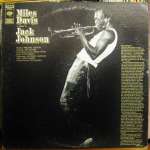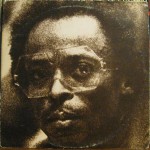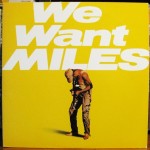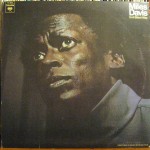December 20, 2013 | Posted in JAZZ | By Jason Sositko
Was On the Corner Miles Davis’ Most hated Album?
I can’t think of a 
Time has been kinder to On the Corner however, with Hip-Hop and various forms of Afro-beat and electronic bass and synthesizer music owing a monster debt to the album.
The album was as much a studio production as it was a musical one, with producer Teo Macero doing his now famous slicing and dicing. Teo had been cutting and pasting the fusion works of Miles 3 years earlier on Bitches Brew and In a Silent Way.
On the corner was apparently the unkindest cut of all, and the final straw as far as neo-con jazz critics were concerned, the music taken in context sure does sound unique, and totally void of influences or any sense of where it could have come from.
It amazes me how many sub genres of music are alive today based on many of Miles’ early 70’s albums. It’s like a cottage industry, drum & bass, techno, post rock, post punk, and post jazz rock. The generations of musicians that came along in the 80’s and 90’s are still pushing and developing this style of music further.
Pay close attention to the music, the entire album is based on drum and bass jams, just straight ahead African or Latin rhythms with spliced in horn work, as groundbreaking as Bitches Brew was overall, On the Corner sure sounds ahead of its time.
I have a hard time believing this music is not the most original and revolutionary album in the entire discography of Miles Davis, and it does point the way to the Cosey Band styles of Agharta and Pangaea, both in studio technique, and style wise.
Miles Dabbles in Stockhausen?
During this early 70’s period, Miles was also into electronic avant garde classical composer Karlheinz Skockhausen, I always felt that the track from Get Up With It “He Loved Him Madly” had a brooding quality, reminiscent of some of Stockhausen’s works. You won’t confuse Davis with Stockhausen though musically.
Reportedly Miles was only in passing aware of a few extended compositions from Stockhausen. Paul Buckmaster who played on the album contributing electric cello of all things, introduced Miles to Stockhausen’s music.
He also lent some arranging expertise, and it was Buckmaster who was into Stockhausen the most.
If you have an open mind to many forms of instrumental music, I think you will be amazed at just how ahead of its time On the Corner is. Check out the Complete on the Corner Sessions if you dare.
Street Wise Music Needs Street Wise Cover Art
The album art for On The Corner was created by Davis friend and associate Corky McCoy. Miles wanted to capitalize on the street vibe of everyday urban “specifically” black life. Critics were not amused, crying tastelessness, and crass commercialization. If Indeed a prophet is not recognized in their own time, Miles and Corky both prove that point.
Both the music and the album art are mainstream, and both are being recognized for the innovations they both brought to each art form.
Admittedly if you come from the tradition 4/4 time swing or bop tradition, On The Corner is going to be tough to swallow. Those with a rock, funk, or experimental listing interest might be shocked to hear an album over 40 years old that sounds modern and fresh to 21st century ears.
*All photos my own*
Related posts at Spacial Anomaly
Table of Contents
Jason Sositko
Jason Sositko, a freelance writer and entrepreneur is a participant in the Amazon Services LLC Associates Program, an affiliate advertising program designed to provide a means for sites to earn advertising fees by advertising and linking to Amazon.com. I also use services such as Viglink and Skimlinks to earn income via links placed inside articles.
Leave a Reply
*












Be the first to comment.